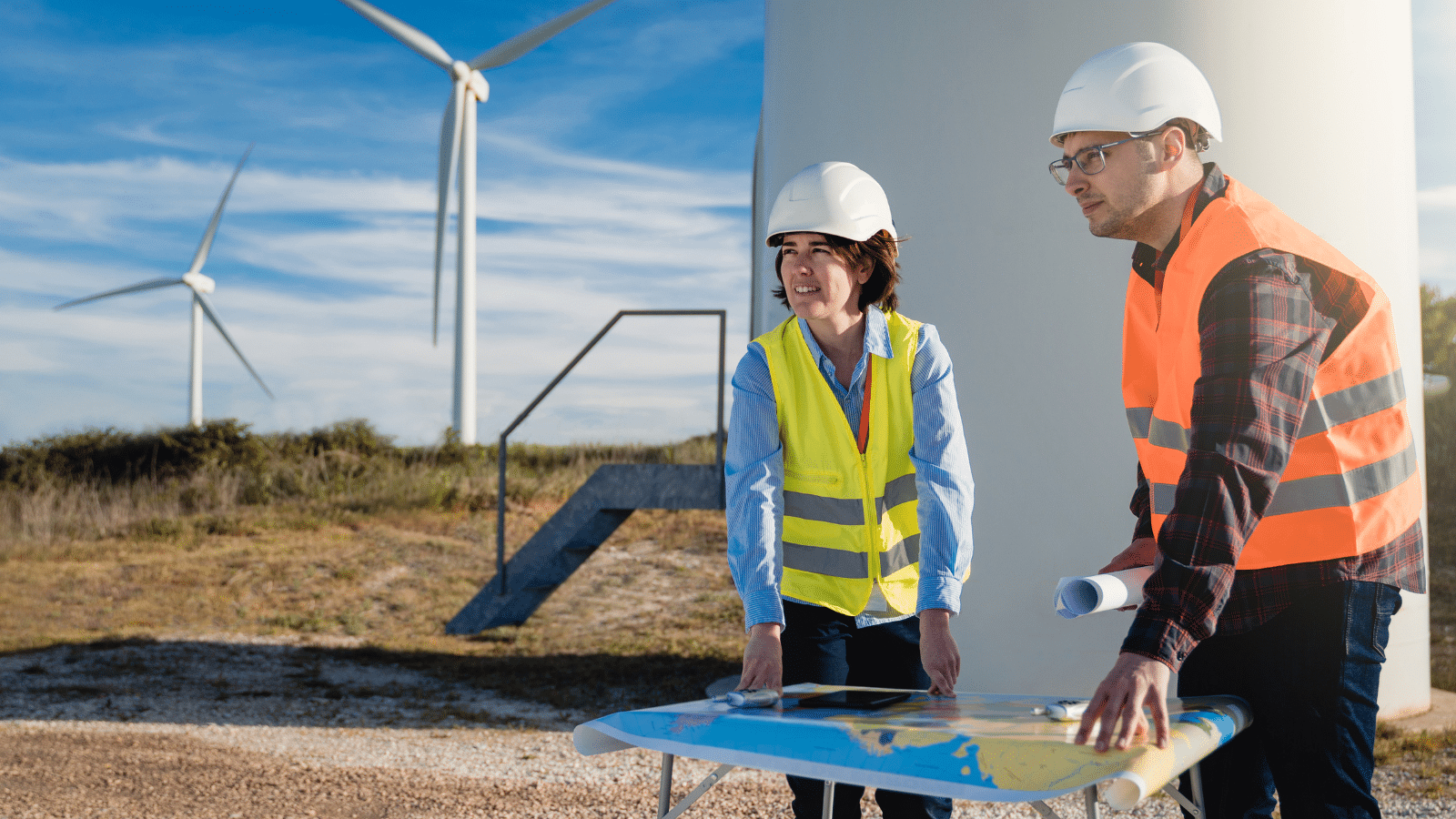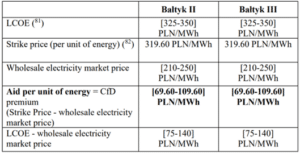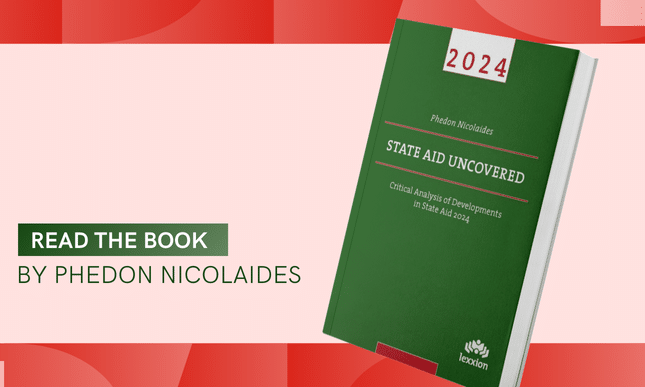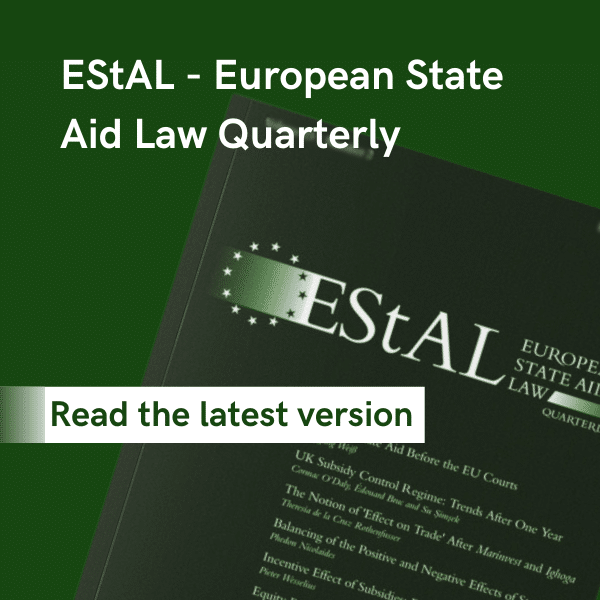
Introduction
State aid to support the generation of electricity from renewable sources must, as standard practice, be granted on the basis of a competitive selection process whereby the most efficient operator gets aid first. With a binding budget, the least efficient operators are excluded. However, there is an exception to this rule for small installations and in situations where there are not enough operators to ensure a truly competitive selection.
A case in point is a recent Commission decision that approved two individual aid measures for offshore wind farms MFW Bałtyk II and MFW Bałtyk III in Poland. The aid that was to be granted without a prior competitive selection was notified in June 2024 was approved soon afterwards by the Commission [see SA.105277 and SA.110765 whose text is identical].[1] These two measures were part of a broader aid scheme for offshore windmills that the Commission had approved in decision SA.55940 in 2021.
However, according to the 2021 decision “(50) the Commission will assess individually (by adopting individual State aid decisions) the specific level of operating aid based on the respective detailed LCOE included in the individual business plan of each project, in line with EEAG guidelines and in particular with point 131 EEAG.” This is why Poland notified individually the two measures.
The scheme is open to projects with location permits that have acquired grid connection. The aid under the scheme is granted directly to projects without any competitive selection through an auction process. The purpose of the aid is to cover operating costs. As explained in the new Commission decision, “(16) the support was granted as operating aid for the Projects (offshore farm including grid connection), based on a two-way Contract for Difference (“CfD”) in the form of a variable premium calculated as the difference payment between the “Strike Price” (defined below) and the wholesale electricity market price. It constitutes a variable market premium on top of the market price that allows for retaining the commercial incentives on the operators to sell their electricity on the market, subject to competitive pressure from other market participants.” “(17) As electricity generators, the windfarm operators will sell the electricity produced on the market as usual but when the average wholesale price of electricity is below the Strike Price, the operators will receive a top-up for the difference. When the average wholesale price of electricity exceeds the Strike Price, the CfD mechanism requires the generators to pay the difference.”
For the projects under the scheme, the strike price is “(18) administratively fixed based on the LCOE and IRR of the project. The Strike Price of the project is always fixed below or equal to the pre-fixed absolute maximum price per MWh (called the “maximum price”) reflecting the LCOE of the offshore technology in Poland at the time of the adoption of the 2021 Commission Decision.”
A brief explanation of the levelised cost of energy [LCOE]
The LCOE is the “levelised cost of energy”. It measures the average cost of electricity generation over the lifetime of the installation and it is given by the average net present cost of electricity generation. It is expressed in euro per energy unit or euro per kilowatt-hour. That is, LCOE = (total lifetime cost)/(total lifetime output). Or, to express it mathematically,
LCOE = [Σ(INV + OPER + F)/(1 + r)n]/[Σ(E)/(1 + r)n], where
INV = initial investment cost
OPER = operating cost
F = fuel cost (which for wind installations is very small)
E = energy (electricity) output
r = discount rate
n = number of years of the economic life of the installation
WACC and strike price
For the aided projects, the economic life of the installations, “n”, is taken to be 25 years. For other similar projects a pre-tax Weighted Average Cost of Capital [WACC] of 6.03% was used as the discount rate, “r”. No aid will be granted after the full depreciation of the installations at the end of the 25-year period. In addition, no add will be granted for periods during which electricity prices are negative [i.e. there is excess supply].
The strike price for MFW Bałtyk II “(45) is fixed at PLN 319.60 per MWh for 25 years and the level of LCOE of the project amounts to PLN2021 [325-350] per MWh for an operation lifetime of 25 years.” In nominal prices, the total investment cost is PLN [9 000–12 000] million while the operating cost is expected to be PLN [90-130] /MWh.
For the MFW Bałtyk II project, the aid per unit of energy = CfD premium [= strike price – wholesale electricity market price] is PLN [69.6-109.6]/MWh. The annual aid amount (without discounting) is PLN 564.6 million. This implies that the total aid amount (without discounting) is PLN 14 115 million. The project WACC (post-tax) with aid is [7-11]% and [7.5-11.5]% without aid. The project IRR (post-tax) with aid is [7-11]% and [3-6]% without aid. This shows that without out, the IRR is about half of the WACC. Also these calculations show that for a project with a long duration [25 years], even very small differences in the WACC [from 7.5-11.5% to 7-11%] can be very significant for the profitability of a project.
The Commission decision also stresses that “(49) if the MFW Bałtyk II offshore wind project operates for 25 years, the resulting project IRR ([7-11]%) is below the WACC ([7.5-11.5]%) used to discount the cash flows in the business model. Consequently, according to the Polish authorities, this confirms the absence of overcompensation in the 25 years scenario.”
Similar calculations are made for the MFW Baltyk III project.
Compatibility of the State aid with the internal market
The two notified measures constitute State aid. Perhaps it is worth singling out the statement of the Commission with respect to the presence of advantage. “(80) Under the Scheme, the Beneficiaries receive an economic advantage in the form of a premium on top of the market price for their electricity production. Those payments guarantee them electricity revenues higher than those which they would otherwise obtain under normal market conditions.”
Since the scheme was approved in 2021 under the Environmental Protection and Energy Aid Guidelines [EEAG], the Commission also assessed the two individual measures on the basis of the same guidelines even though they have since expired.
On the positive side, the Commission checked whether the two measures contributed to the development of an economic activity, whether the aid had an incentive effect and that the aid did not intrinsically infringe any other provision of EU law.
With respect to the incentive effect of the aid, the Commission repeated the findings of the 2021 decision. “(91) […] (130) The targeted wind projects would not be executed in the absence of the aid, given the gap between the costs to produce the electricity based on offshore wind technology and the market price for electricity which is generally lower. The Polish authorities demonstrated that State support is needed to change behaviour towards generating investments in offshore windfarms, which are not financially viable in Poland. (131) […] the offshore wind technology is still not cost-competitive in Poland. Electricity generated by this technology cannot compete on market terms with electricity generated from existing conventional electricity production in Poland. Without the aid, the offshore windfarm projects would not be financially viable and would not be carried out.”
In the present decision, the Commission added that “(93) according to points 60 and 61 EEAG, the incentive effect is, in principle, to be identified through the counterfactual scenario analysis, comparing the levels of intended activity with aid and without aid. The Polish authorities demonstrated that without aid, the Projects would not be financially viable, as the costs of generating electricity (LCOE) from the Projects are higher than the income from the sale of electricity generated. Poland also showed that without aid the IRR of those projects (in both 25 and [26-30] years operation lifetime scenarios) would be low, as shown in the Table 5 below, and significantly below investors’ expectations given the overall risk profile of such projects. In such a situation, any reasonable investor would not invest in this project given the overall risk profile of projects of that nature. The aid therefore changes the behaviour of the recipients.”
Table 5 shows the following:
“Table 5 – MFW Bałtyk II and MFW Bałtyk III offshore windfarm projects’ IRRs”

On the negative side, the Commission confirmed that there was a need for state intervention, that the aid was appropriate and proportional and that there was no undue affectation of trade and distortion of competition.
With respect to the proportionality of the aid, the Commission reiterated its 2021 findings. “(101) […] (162) […] aid will be granted as a premium in addition to the market price whereby the generators sell their electricity directly to the market. (163) […] the support will be granted as operating aid, based on a two-sided CfD in the form of a variable premium calculated as the difference payment between the strike price […] of the project and a measure of the market price for electricity (the wholesale electricity price). Generators sell their electricity on the market as usual but when the average wholesale price of electricity is below the strike price, generators receive a top-up for the difference. When the average wholesale price of electricity exceeds the strike price, the CfD mechanism requires the generator to pay the difference to the CfD counterparty. In exchange for a certain stability and predictability of their revenues, the beneficiaries will not be able to benefit of very high electricity prices. […] (164) Granting aid in the form of a variable market premium on top of the market price retains the commercial incentives on the operator to sell its electricity on the market in the normal market way, subject to competitive pressures from other market participants.”
The Commission decision also explained the reason why the aid was granted without competitive procedure, as is the standard requirement. Again, the Commission cited its reasoning in the 2021 decision.
“(101) […] (168) The Polish authorities requested to rely on the exception from the general requirement to grant aid in competitive bidding process […] since they demonstrated that the very limited number of eligible projects spread over the coming years renders the organization of any competitive bidding process impossible during this period. (169) […] for the limited number of projects in the first phase of the scheme, the Commission will approve (by adopting individual State aid decisions) the specific level of operating aid based on the respective detailed LCOE included in the individual business plan of each project […] (170) In addition, […], after the adoption of the individual State aid decision by the Commission, the Polish authorities will take steps to ensure that the level of the CfD remains proportionate in case of substantial changes to the project made between the individual State aid decision and the Final Investment Decision. In the event that such substantial changes occur the Polish authorities undertake to reduce the level of the CfD awarded to the project in order to maintain the IRR at the level defined in the individual State aid decision (allowing 1 p.p. flexibility compared to this level). (171) This first phase of direct aid award will enable the necessary quick-off of the offshore wind technology, which is still at an initial development stage in Poland. This first phase of the scheme will help Poland to contribute to the renewable energy targets […] (172) In view of the above and of the fact that in the second phase of the scheme aid will be granted by means of a competitive bidding process on the basis of clear, transparent and non-discriminatory criteria, the Commission concludes that the exception from the general requirement to grant aid in competitive bidding processes during the first phase of the scheme can be considered compatible with the requirements of EEAG”.
Then the Commission checked compliance with the specific requirements in the EEAG according to which “(103) point 131 EEAG exposes that: “For energy from renewable sources other than electricity, operating aid will be considered compatible with the internal market if the following cumulative conditions are met:
- a) the aid per unit of energy does not exceed the difference between the total levelised costs of producing energy (LCOE) from the particular technology in question and the market price of the form of energy concerned;
- b) the LCOE may include a normal return on capital. Investment aid is deducted from the total investment amount in calculating the LCOE;
- c) the production costs are updated regularly, at least every year; and
- d) aid is only granted until the plant has been fully depreciated according to normal accounting rules in order to avoid that operating aid based on LCOE exceeds the depreciation of the investment”.
“(104) The respective individual business plans provide the detailed calculation of the LCOE. As […] summarised in the overview Table 6 below, the condition of point 131 (a) EEAG is fulfilled for the Projects since the aid per unit of energy does not exceed the difference between the LCOE and the wholesale electricity market price”.
“Table 6 – MFW Bałtyk II and MFW Bałtyk III offshore windfarm projects – Aid per unit of energy”

With respect to the possible negative effects of the aid, the Commission noted the following.
“(122) Point 97 EEAG explains that, when assessing the negative effects of an aid measure, the Commission assesses the impact on competition between undertakings in the product markets affected and on the location of economic activity. Point 98 adds that, where aid is proportionate, its negative impact is in principle softened.”
“(123) In the present case, in line with point 97 EEAG, the aids are well targeted to the market failure which it aims to address […] The risk that the aids will unduly distort competition is, therefore, limited.”
“(124) In line with point 98 EEAG, since the respective aid to the Projects is proportionate […] the negative impact of the aid on competition and trade is softened.”
Therefore, the two aid measures were found to be compatible with the internal market.
[1] The text of SA.105277 and SA.110756 is identical. It can be accessed at:
https://ec.europa.eu/competition/state_aid/cases1/20252/SA_105277_61.pdf



